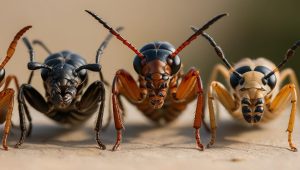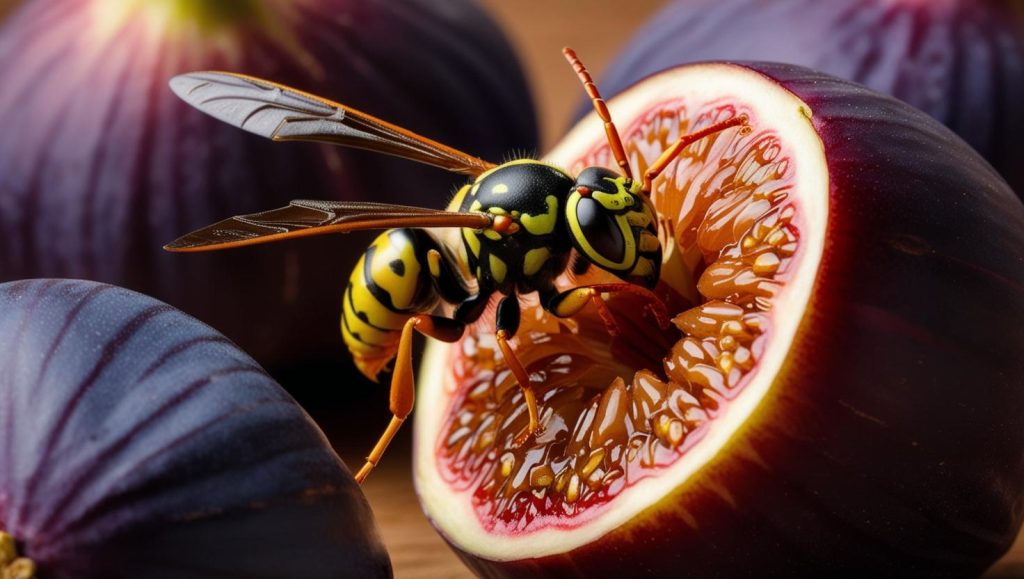Learn about Figs
Do Figs Have Wasps in Them? Here’s the Juicy Truth
Let’s talk about figs… and wasps.
They’re sweet, a little jammy, kind of mysterious — the sort of fruit that feels decadent even when it’s just hanging out on a cheese board. But if you’ve ever bitten into one and someone nearby asked, “You know there might be a wasp in that, right?” — well, welcome to the rabbit hole. Or should we say… wasp hole?
So, do figs have wasps in them?
The answer’s not as simple as yes or no. It’s more like, “Sometimes. But also no. But also… kind of?” Let me explain.
A Tiny Love Story: Figs and Wasps
This part might surprise you — figs and a very specific kind of wasp (unsurprisingly called the fig wasp) have been locked in a mutual relationship for millions of years. Literally. It’s not just biology — it’s practically romance.
See, certain types of figs (like Smyrna figs) need wasps to reproduce. These figs don’t flower like normal fruit. Instead, their flowers bloom inside the fruit. So the wasps — tiny little things — have to crawl into the fig through a small opening called the ostiole. When they do, they pollinate the fig while trying to lay their eggs. Sometimes they succeed. Sometimes they die trying. Either way, the fig gets pollinated, and the fruit develops.
Now, here’s the part that makes people squirm: yes, some wasps die inside. But before you freak out and swear off figs forever, keep reading.
So… Are There Dead Wasps in My Fruit?
Technically, sometimes. But practically? Not really.
Figs produce an enzyme called ficin. It’s a natural digestive enzyme that breaks down the wasp’s soft body. So even if a wasp does end up inside, it gets broken down — completely dissolved — and absorbed into the fruit. There’s no crunch, no wings, no bug guts.
It’s not like biting into a candy apple and suddenly hitting a cicada. By the time you’re eating a fig, there’s nothing left of the wasp. It’s just… fig.
Wait — Do All Figs Involve Wasps?
Nope. And here’s where the modern magic of agriculture kicks in.
Most of the figs you find at your local grocery store? Like Black Mission, Kadota, Brown Turkey — those are parthenocarpic figs. That’s just a fancy way of saying they don’t need to be pollinated to produce fruit. No wasps involved. None.
In the fig world we call these parthenocarpic figs, “common”. If someone calls a fig a common fig, they mean it doesn’t need to be pollinated to produce delicious figs.
So unless you’re buying Smyrna figs directly from a specialty grower, odds are you’ve never eaten a fig that’s hosted a wasp.
And honestly? Even if you have, would you ever know?
Nature’s Compost Bin: Enzymes to the Rescue
Let’s circle back to that enzyme, ficin. It’s kind of the unsung hero of this story.
This enzyme acts like a tiny internal compost bin. If a wasp dies inside the fig, ficin breaks it down into nutrients — proteins, amino acids, stuff the plant can use. There’s no wasp body. No hard exoskeleton. Just a little extra protein (you’re welcome).
You’ve probably eaten dozens, maybe hundreds of figs in your life — dried, fresh, baked into cookies — and never once thought, “Hmm… tastes like insect.”
Because it doesn’t.
Cultural Crunch: Why Bugs Freak Us Out

Here’s the thing — our reaction to “there might be a bug in my food” isn’t just about the bug. It’s cultural.
People eat insects around the world every day. Crickets, mealworms, even wasps — they’re packed with protein and way more sustainable than beef. But in many Western cultures, we’ve trained ourselves to think bugs = bad. So when you hear “a wasp died inside this fruit,” your brain screams nope before it even hears the rest of the story.
But really? It’s not that different from mold in blue cheese. Or yeast in bread. Or bacteria in yogurt. Tiny invisible things that make our food better. Sometimes a little gross, always kind of magical.
Farming Figs Without the Drama
Modern fig farmers aren’t relying on wasps to do the work anymore — not for the most part, anyway.
Commercial fig varieties are bred for convenience, consistency, and yes, consumer comfort. That means parthenocarpic varieties that grow and ripen without pollination. In California, where most of the U.S. figs come from, this kind of cultivation is the norm.
The fig-wasp relationship is ancient — but for store shelves, we’ve mostly engineered it out. Think of it like old-school film photography. Still beautiful, still revered, but mostly replaced by digital ease.
What Actually Happens to the Wasp?
Okay, one last science bit — because it’s kind of wild.
If a female fig wasp enters the wrong type of fig (like a non-compatible variety), she can’t lay her eggs and ends up dying without reproducing. Her body is absorbed, broken down, and the fig still benefits.
If she does find the right kind, she lays her eggs, they hatch, and the cycle continues — little wasps are born inside the fig and eventually escape. It’s weird, it’s wonderful, and it happens completely unnoticed by 99.9% of people.
So no — the wasp doesn’t just hang out in your fruit. She either dissolves, helps pollinate and dies, or gets her kids out and leaves. Nature has its own rules, and they’re kind of brilliant.
Should You Still Eat Figs?
Absolutely.
They’re safe. They’re healthy. They’re delicious. And unless you’re deeply bug-phobic (and even then…), there’s nothing to fear. The wasp, if she was ever there, is long gone by the time you’re snacking on that fig bar or slathering fig jam on toast.
Plus, now you’ve got a cool fact to pull out at dinner parties.
Final Thought: The Most Romantic Fruit?
Figs are full of drama. Think about it — a tiny wasp crawling into a fruit to give it life, only to die for the cause? That’s Shakespearean. That’s opera-level intensity.
And now that you know? Maybe figs taste just a little sweeter. Not just because of the sugar, but because you’re tasting a story millions of years in the making.
So next time someone says, “Wait, aren’t there wasps in those?”
You can smile and say, “Maybe. But that’s part of the magic.”
Want to learn more about fig varieties, fig myths, and how to grow your own? Stick around here at figfreak.com — we’ve got plenty more where that came from.

